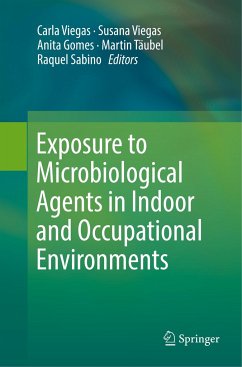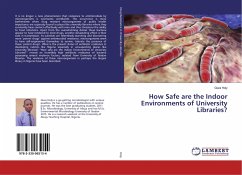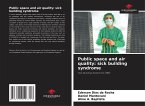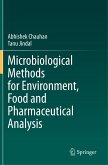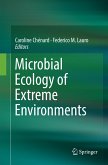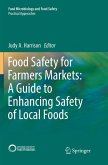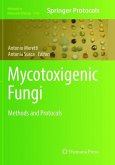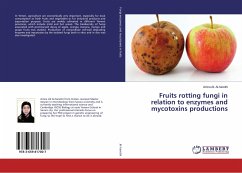Exposure to Microbiological Agents in Indoor and Occupational Environments
Herausgegeben:Viegas, Carla; Viegas, Susana; Gomes, Anita; Täubel, Martin; Sabino, Raquel
Exposure to Microbiological Agents in Indoor and Occupational Environments
Herausgegeben:Viegas, Carla; Viegas, Susana; Gomes, Anita; Täubel, Martin; Sabino, Raquel
- Broschiertes Buch
- Merkliste
- Auf die Merkliste
- Bewerten Bewerten
- Teilen
- Produkt teilen
- Produkterinnerung
- Produkterinnerung
This book intends to provide information about detection and health effects due to bacteria, fungi and viruses in indoor environments. The book will cover also information about preventive and protective measures to avoid health-hazardous. Case studies will be also addressed to enrich the book with the expertise of each invited author. The book also intends to fill a gap regarding information about all biologic agents, since most of the books available are dedicated to only one type of microorganisms.
For various different biologic agents and metabolites this book will compile information…mehr
Andere Kunden interessierten sich auch für
![How Safe are the Indoor Environments of University Libraries? How Safe are the Indoor Environments of University Libraries?]() Giwa HolyHow Safe are the Indoor Environments of University Libraries?40,99 €
Giwa HolyHow Safe are the Indoor Environments of University Libraries?40,99 €![Public space and air quality: sick building syndrome Public space and air quality: sick building syndrome]() Ederson Dias da RochaPublic space and air quality: sick building syndrome28,99 €
Ederson Dias da RochaPublic space and air quality: sick building syndrome28,99 €![Microbiological Methods for Environment, Food and Pharmaceutical Analysis Microbiological Methods for Environment, Food and Pharmaceutical Analysis]() Abhishek ChauhanMicrobiological Methods for Environment, Food and Pharmaceutical Analysis81,99 €
Abhishek ChauhanMicrobiological Methods for Environment, Food and Pharmaceutical Analysis81,99 €![Microbial Ecology of Extreme Environments Microbial Ecology of Extreme Environments]() Microbial Ecology of Extreme Environments81,99 €
Microbial Ecology of Extreme Environments81,99 €![Food Safety for Farmers Markets: A Guide to Enhancing Safety of Local Foods Food Safety for Farmers Markets: A Guide to Enhancing Safety of Local Foods]() Food Safety for Farmers Markets: A Guide to Enhancing Safety of Local Foods54,99 €
Food Safety for Farmers Markets: A Guide to Enhancing Safety of Local Foods54,99 €![Mycotoxigenic Fungi Mycotoxigenic Fungi]() Mycotoxigenic Fungi69,99 €
Mycotoxigenic Fungi69,99 €![Fruits rotting fungi in relation to enzymes and mycotoxins productions Fruits rotting fungi in relation to enzymes and mycotoxins productions]() Amira Ali Al-harethiFruits rotting fungi in relation to enzymes and mycotoxins productions51,99 €
Amira Ali Al-harethiFruits rotting fungi in relation to enzymes and mycotoxins productions51,99 €-
-
-
This book intends to provide information about detection and health effects due to bacteria, fungi and viruses in indoor environments. The book will cover also information about preventive and protective measures to avoid health-hazardous. Case studies will be also addressed to enrich the book with the expertise of each invited author. The book also intends to fill a gap regarding information about all biologic agents, since most of the books available are dedicated to only one type of microorganisms.
For various different biologic agents and metabolites this book will compile information about indoors presence, detection methods, exposure assessment and health effects. Several problems regarding the exposure of biologic agents will be presented through case studies, and also the implementation of preventive and protective measures to avoid/minimize exposure. Besides, all the book will focus on occupational health and/or public health point of view.
For various different biologic agents and metabolites this book will compile information about indoors presence, detection methods, exposure assessment and health effects. Several problems regarding the exposure of biologic agents will be presented through case studies, and also the implementation of preventive and protective measures to avoid/minimize exposure. Besides, all the book will focus on occupational health and/or public health point of view.
Produktdetails
- Produktdetails
- Verlag: Springer / Springer International Publishing / Springer, Berlin
- Artikelnr. des Verlages: 978-3-319-87133-2
- Softcover reprint of the original 1st ed. 2017
- Seitenzahl: 432
- Erscheinungstermin: 18. Mai 2018
- Englisch
- Abmessung: 235mm x 155mm x 24mm
- Gewicht: 651g
- ISBN-13: 9783319871332
- ISBN-10: 3319871331
- Artikelnr.: 55128670
- Herstellerkennzeichnung Die Herstellerinformationen sind derzeit nicht verfügbar.
- Verlag: Springer / Springer International Publishing / Springer, Berlin
- Artikelnr. des Verlages: 978-3-319-87133-2
- Softcover reprint of the original 1st ed. 2017
- Seitenzahl: 432
- Erscheinungstermin: 18. Mai 2018
- Englisch
- Abmessung: 235mm x 155mm x 24mm
- Gewicht: 651g
- ISBN-13: 9783319871332
- ISBN-10: 3319871331
- Artikelnr.: 55128670
- Herstellerkennzeichnung Die Herstellerinformationen sind derzeit nicht verfügbar.
Susana Viegas - Graduated in Environmental Health from Lisbon School of Health Technology - Polytechnic Institute of Lisbon has a Master degree in Safety and Ergonomics from Lisbon University and PhD in Occupational and Environmental Health from New University of Lisbon. The principal research topics of this author are chemical occupational exposures and indoor air quality. Director and Professor of Environmental Health Graduate Course of Lisbon School of Health Technology and Coordinator of Environment and Health Research Group. Published mostly on occupational and environmental exposure to chemical agents and nowadays developing research about occupational exposures to mycotoxins in different settings.Carla Viegas ¿ Graduated in Environmental Health from Lisbon School of Health Technology ¿ Polytechnic Institute of Lisbon has a Master degree in Safety and Ergonomics from Lisbon University and PhD in Occupational and Environmental Health from New University of Lisbon. The author¿s major field of study is occupational and environmental mycology leading and participating in several projects about both areas of expertise. Special interest are occupational exposure to fungi in highly contaminated settings and complementarity of conventional methods and molecular tools to assess fungi occupational exposure with several articles published or in press. Professor at Lisbon School of Health Technology, Director of the Occupational Health Master¿s course and researcher at Environment and Health Research Group.Anita Gomes ¿ Graduated in Biochemistry from Faculty of Sciences, University of Lisbon, has a PhD in Molecular and Cellular Biology from Imperial College, University of London. This author¿s major research interest is the molecular, microRNA-mediated post-transcriptional, regulation of a specific type of Immune T cells (gd T cells) differentiation and function. This work is carried out in Bruno Silva-Santos lab in the Institute of Molecular Medicine in Lisbon. The author is also a researcher in the Environment and Health Research Group, where it is mainly focused on the molecular identification of fungal species in different settings. Published in several renown international journals, addressing the molecular regulation of several processes (immune and non-immune related) and, more recently, in the occupational and environmental exposures to fungi. The author is a lecturer at the Lisbon School of Health Technology where she is a member of the Scientific Area of Biology, Department of Natural and Exact Sciences.Martin Täubel ¿ Graduated in Microbiology from University of Vienna, and has a PhD in Food- and Biotechnology from University of Natural Resources and Life Sciences Vienna. Since 2006 the author has focused his activities on public health related research on indoor microbial exposures in residential settings and in schools. His main research interest is on the protective as well as adverse qualities of microbial exposures in the human living environment. The main expertise of this author is on measurement strategies of microbes in indoor spaces. The author has published and reviewed in key journals within the area of Environmental Health, teaches courses at the university of Eastern Finland, chairs the Scientific technical Committee on `Microbes in the Indoor Environment¿ of the International Society for Indoor Air Quality (ISIAQ), and has been temporary advisor for World Health Organization (WHO).Raquel Sabino ¿ Graduated in Biology by the University of Lisbon and PhD in Biological Sciences, Mycology by Minho University. Developed her Posdoc in molecular epidemiology of Aspergillus, in collaboration with Standford Univerity and California Institute of Medical Research, California. Actually, the author develops her work at the Reference Unit for Parasitic and Fungal Infections at National Institute of Health Dr. Ricardo Jorge.The author¿s major field of study is diagnosis, surveillance and molecular epidemiology of fungal infections. She has several publications and communications in these areas of expertise, namely scientific papers published in international and national peer-reviewed journals, book chapters and she is also editor of also one book in the field of mycology; Lecturer in national and international conferences, workshops and scientific meetings. She is the Portuguese Ambassador of the international organization GAFFI - Global Action Fund for Fungal Infections (http://www.gaffi.org/who/our-ambassadors/portugal/) and one of the Portuguese representatives of the international group LIFE (Leading International Fungal Education).
Foreword.- Part I. Indoor exposure to microorganisms with emphasis on occupational environments.- Chapter I - Occupational fungal exposure in United States.- Chapter 2 - Bacteria in Indoor and Occupational Settings.- Chapter 3 - Characterization of Viral Exposures in United States Occupational Environments.- PART II. Sampling and analysis approaches in indoor microbial assessments.- Chapter 4 - Sampling for microbial determinations.- Chapter 5 - Analyses approaches for bacteria.- Chapter 6 - Analyses approaches for fungi in indoor environments.- Part III: Microbial cell wall components, secondary metabolites and health implications upon exposure.- Chapter 8 - Endotoxins, glucans and other microbial cell wall agents.- Chapter 9 - Human biomonitoring of mycotoxins for the detection of nutritional, environmental and occupational exposure.- Chapter 10 - Microbial secondary metabolites - in a more detail manner - inhalation effects of mycotoxins.- PART IV. Microbial exposures and health effects in specific indoor settings.- Section I- Residences, schools and office environments.- Chapter 11 - Microbial exposures in public buildings. - Chapter 12 - Microbial exposures in schools and daycare centers.- Chapter 13- Microbial exposures in residential homes.- Section II - Hospital environments. - Chapter 14 - Environmental Fungal Risk in Health Facilities.- Chapter 15 - Bacterial bioburden in hospital environment.- Chapter 16 - Virus bioburden in hospital settings.- PART V. Occupational environments with potential high microbial exposure.- Chapter 17 - Bioburden exposure in highly contaminated occupational environments.- Chapter 18 - What is known about zoonotic bacteria in cattle and pig farms, and what should be done to prevent occupational infections.- PART VI- Antimicrobial resistances in specific environments.- Chapter 19 - Antifungal resistances.- Chapter 20 - Bacterial resistances.- index.
Foreword.- Part I. Indoor exposure to microorganisms with emphasis on occupational environments.- Chapter I - Occupational fungal exposure in United States.- Chapter 2 - Bacteria in Indoor and Occupational Settings.- Chapter 3 - Characterization of Viral Exposures in United States Occupational Environments.- PART II. Sampling and analysis approaches in indoor microbial assessments.- Chapter 4 - Sampling for microbial determinations.- Chapter 5 - Analyses approaches for bacteria.- Chapter 6 - Analyses approaches for fungi in indoor environments.- Part III: Microbial cell wall components, secondary metabolites and health implications upon exposure.- Chapter 8 - Endotoxins, glucans and other microbial cell wall agents.- Chapter 9 - Human biomonitoring of mycotoxins for the detection of nutritional, environmental and occupational exposure.- Chapter 10 - Microbial secondary metabolites - in a more detail manner - inhalation effects of mycotoxins.- PART IV. Microbial exposures and health effects in specific indoor settings.- Section I- Residences, schools and office environments.- Chapter 11 - Microbial exposures in public buildings. - Chapter 12 - Microbial exposures in schools and daycare centers.- Chapter 13- Microbial exposures in residential homes.- Section II - Hospital environments. - Chapter 14 - Environmental Fungal Risk in Health Facilities.- Chapter 15 - Bacterial bioburden in hospital environment.- Chapter 16 - Virus bioburden in hospital settings.- PART V. Occupational environments with potential high microbial exposure.- Chapter 17 - Bioburden exposure in highly contaminated occupational environments.- Chapter 18 - What is known about zoonotic bacteria in cattle and pig farms, and what should be done to prevent occupational infections.- PART VI- Antimicrobial resistances in specific environments.- Chapter 19 - Antifungal resistances.- Chapter 20 - Bacterial resistances.- index.

